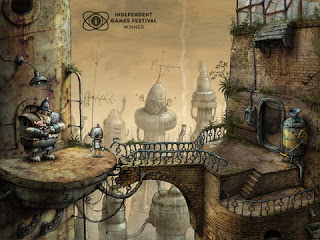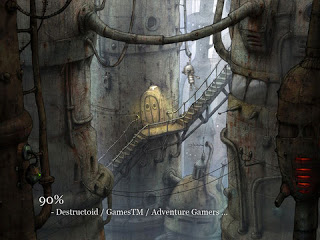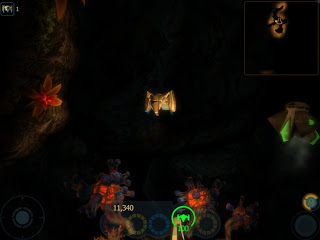Splice: Tree Of Life [Cipher Prime Studios] – $3.99
Number of Results: 19
One of the best Real Time Strategy (RTS) games for the platform, Autumn Dynasty, has seen its first ever sale today (Thanks Bulkypix!) dropping its’ price from $6.99 to $2.99. Our ‘On Sale’ section is updated throughout the day with this information as well, but this game is just so awesome, I really wanted to alert you all as many places as I could!

I can’t say enough on how much this game rocks, and it has seen a few fabulous updates as of late which allows this game to be played as a casual pick-up and play, then save game, as well as game that you can sink massive amounts of time into. Something I still find myself doing, even with the plethora of new titles to the genre ever emerging. This is an iPad only game, but plays on all versions of the device.
 The first thing I noticed when starting up the game, was the fantastic graphics. The beautiful, amazing, mind-blowing, hand-drawn graphics are outstanding. And the way that the movable objects and computer graphics interact with the hand-drawn graphics is simply stunning. The animations are spectacular, and coupled with the music and sound effects, it all creates one incredible atmosphere, and portrays a great deal of emotion throughout the game. If you’re curious, the game is an exact port of the PC/MAC and PS 3 versions.
The first thing I noticed when starting up the game, was the fantastic graphics. The beautiful, amazing, mind-blowing, hand-drawn graphics are outstanding. And the way that the movable objects and computer graphics interact with the hand-drawn graphics is simply stunning. The animations are spectacular, and coupled with the music and sound effects, it all creates one incredible atmosphere, and portrays a great deal of emotion throughout the game. If you’re curious, the game is an exact port of the PC/MAC and PS 3 versions.  Now, I’ll quickly admit that I haven’t had the pleasure of playing many Point & Click games, but from what I have played, the puzzles that you need to complete in Machinarium are incredibly creative, and at times, can be fairly difficult to figure out, and some of them can seem downright unfair. Even with other titles within the puzzle genre, I’ve never come across this level of difficulty. However, not once did it become difficult to the point that it was frustrating. If anything, the difficulty ended up driving my addiction and love for the game every step of the way.
Now, I’ll quickly admit that I haven’t had the pleasure of playing many Point & Click games, but from what I have played, the puzzles that you need to complete in Machinarium are incredibly creative, and at times, can be fairly difficult to figure out, and some of them can seem downright unfair. Even with other titles within the puzzle genre, I’ve never come across this level of difficulty. However, not once did it become difficult to the point that it was frustrating. If anything, the difficulty ended up driving my addiction and love for the game every step of the way.  The story isn’t immediately clear when you start up the game, but as you progress, and find out that you’re not alone, and that this machine world is full of quite a few different robots and machine-beings, all with different personalities of their own, all expressed and conveyed in a way that everyone and anyone, no matter their past, cultural background, or language, can completely understand and feel comfortable with knowing what it going on with all of them. And as you progress, and get to know and help these other robots throughout the world, the story opens up, and your main objective becomes clear.
The story isn’t immediately clear when you start up the game, but as you progress, and find out that you’re not alone, and that this machine world is full of quite a few different robots and machine-beings, all with different personalities of their own, all expressed and conveyed in a way that everyone and anyone, no matter their past, cultural background, or language, can completely understand and feel comfortable with knowing what it going on with all of them. And as you progress, and get to know and help these other robots throughout the world, the story opens up, and your main objective becomes clear.
Here’s what’s new in Version 1.1.0 —
 Now if that doesn’t get your blood pumping, I don’t know what will. Gene Effect has already found itself in the #1 spot on my Favorite Game of 2012 list, and judging by this update, will not be knocked down any time soon. It definitely brings console gaming to the iDevice, and offers up a large 8-12 hour campaign, depending on how many of the secret items, some used to upgrade your ship, you’re determined to find. After that, there’s still 4 medals and 2 awards for each of the 21 stages to try and grab, and a Hard Difficulty Mode which is unlocked after beating the game on Normal. The graphics, physics, music… everything about the game is reminiscent of a true console experience. So if you’re a hardcore gamer looking for games that push the iDevice forward in the best way, Gene Effect is definitely a title you need to check out. This first update for Gene Effect also proves that Lightstorm3D is dedicated to making Gene Effect one of the best gameplay experiences that they can. $5 for this now Universal version of the game is a steal. If you’re even remotely interested in exploration, adventure, action, arcade, or cave/mining games, GRAB GENE EFFECT NOW! If you were waiting to see if Retina Support for the new iPad was coming, you now have nothing to keep you from taking the plunge. My hats off to Lightstorm3D!
Now if that doesn’t get your blood pumping, I don’t know what will. Gene Effect has already found itself in the #1 spot on my Favorite Game of 2012 list, and judging by this update, will not be knocked down any time soon. It definitely brings console gaming to the iDevice, and offers up a large 8-12 hour campaign, depending on how many of the secret items, some used to upgrade your ship, you’re determined to find. After that, there’s still 4 medals and 2 awards for each of the 21 stages to try and grab, and a Hard Difficulty Mode which is unlocked after beating the game on Normal. The graphics, physics, music… everything about the game is reminiscent of a true console experience. So if you’re a hardcore gamer looking for games that push the iDevice forward in the best way, Gene Effect is definitely a title you need to check out. This first update for Gene Effect also proves that Lightstorm3D is dedicated to making Gene Effect one of the best gameplay experiences that they can. $5 for this now Universal version of the game is a steal. If you’re even remotely interested in exploration, adventure, action, arcade, or cave/mining games, GRAB GENE EFFECT NOW! If you were waiting to see if Retina Support for the new iPad was coming, you now have nothing to keep you from taking the plunge. My hats off to Lightstorm3D!